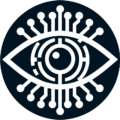Bridging the Gap: How AI Enhances Remote Work Productivity
The shift to remote work has been accompanied by concerns about a potential “productivity gap.” However, this perceived gap is often more myth than reality. With the right tools and strategies, remote work can be just as productive—if not more so—than traditional office settings. Artificial Intelligence (AI) is playing a crucial role in bridging this imaginary gap, offering solutions that enhance efficiency, collaboration, and overall productivity in remote work environments.
1. Intelligent Task Management
AI-powered project management tools can prioritize tasks, suggest optimal schedules, and even predict potential bottlenecks. By analyzing work patterns and project data, these systems help remote workers stay focused on high-priority items and manage their time more effectively.
2. Enhanced Communication
AI-driven communication platforms can transcribe meetings, summarize lengthy email threads, and even suggest optimal times for team check-ins. These features ensure that important information isn’t lost and that remote team members stay connected without constant interruptions.
3. Automated Administrative Tasks
AI can handle routine administrative tasks such as scheduling, data entry, and basic report generation. This automation frees up remote workers to focus on more complex, value-adding activities that require human creativity and problem-solving skills.
4. Personalized Learning and Development
AI-based learning platforms can identify skill gaps and suggest personalized training content. This ensures that remote workers continue to grow professionally, adapting to new challenges and maintaining high productivity levels.
5. Virtual Collaboration Spaces
AI is enhancing virtual collaboration tools, creating more intuitive and immersive environments for remote teamwork. These spaces can simulate the spontaneous interactions of an office, fostering creativity and innovation among distributed teams.
6. Smart Time Tracking
Instead of invasive monitoring, AI-powered time tracking tools can provide insights into work patterns and suggest ways to optimize productivity. These tools focus on outcomes rather than hours logged, promoting a healthier work-life balance.
7. Contextual Assistance
AI assistants can provide contextual help, answering questions about company policies, technical issues, or project-specific information. This reduces the time remote workers spend searching for information, keeping them focused on their core tasks.
8. Predictive Analytics for Workload Management
AI can analyze historical data to predict busy periods or potential resource shortages. This allows managers to proactively adjust workloads and ensure that remote teams are neither overwhelmed nor underutilized.
9. Enhanced Cybersecurity
AI-driven security systems can protect remote workers from cyber threats, reducing downtime and data loss. These systems adapt to new threats in real-time, ensuring that productivity isn’t compromised by security breaches.
10. Wellness and Mental Health Support
AI can help monitor work patterns and suggest breaks, exercise, or mindfulness activities. By supporting the mental health and well-being of remote workers, these tools help maintain long-term productivity and job satisfaction.
Far from creating a productivity gap, remote work—when supported by AI technologies—can lead to significant efficiency gains. These AI-driven solutions address the unique challenges of remote work, turning potential obstacles into opportunities for enhanced productivity. As businesses continue to adapt to distributed work models, integrating AI tools can help create a more connected, efficient, and productive remote workforce. By leveraging these technologies, companies can not only bridge the imaginary productivity gap but potentially surpass traditional office-based productivity levels, ushering in a new era of flexible and high-performing work environments.



